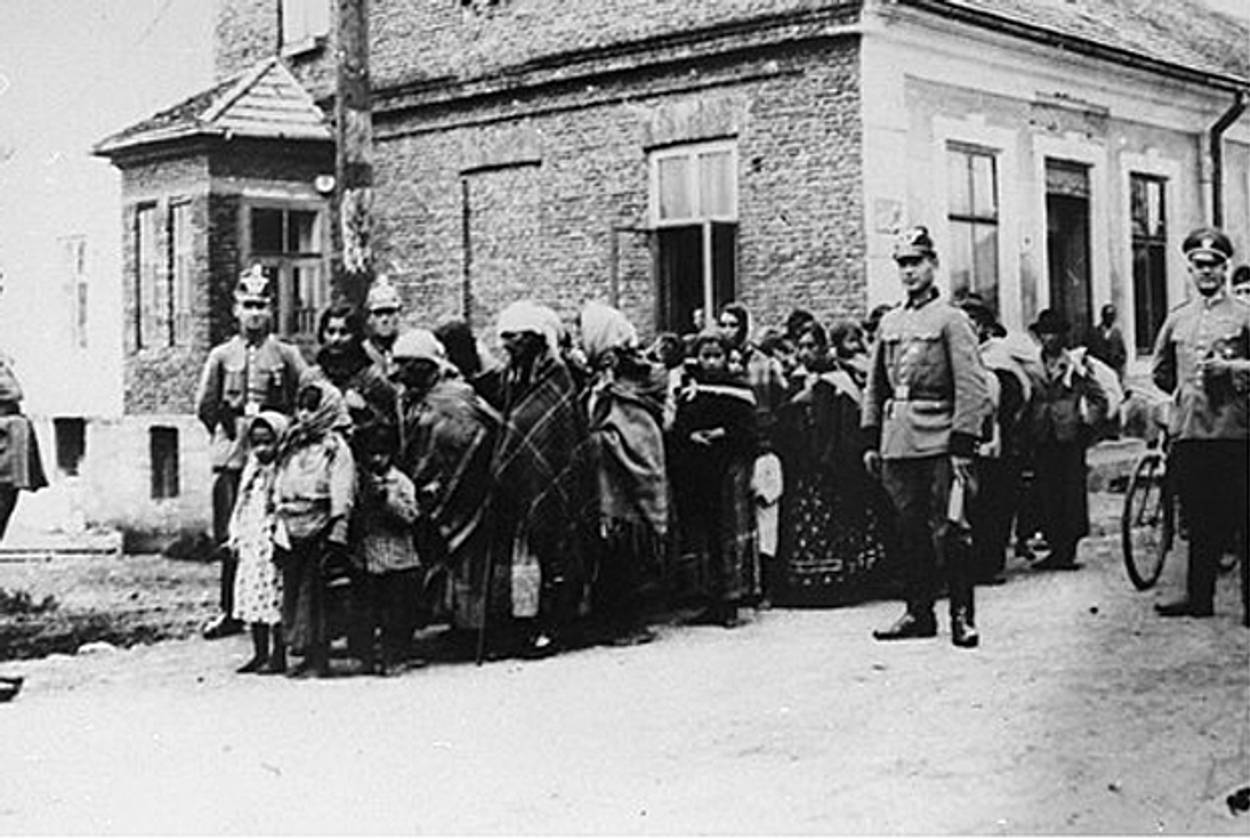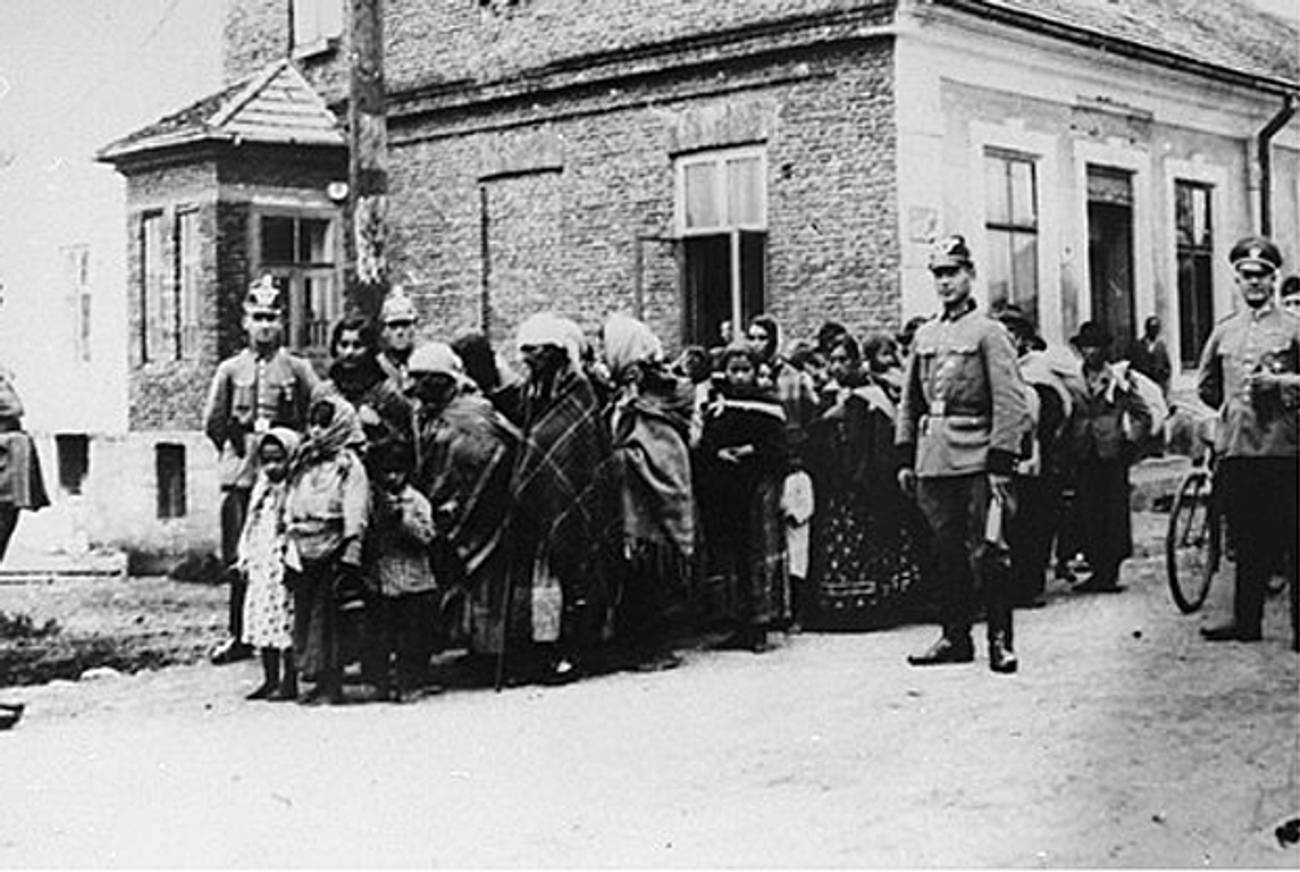Remembering the Sinti and Roma of Auschwitz
On August 2, 1944, Nazis liquidated the concentration camp’s Gypsy section




At twilight on the evening of Aug. 2, 1944, big, wood-sided trucks arrived at the Gypsy family camp of Auschwitz-Birkenau. The prisoners were given sausage and a piece of bread and told that they were being taken to another camp. At first, the trucks drove off in a different direction from the gas chambers and crematoria, but as they doubled back toward the killing factories, the Gypsies began to struggle and fight the guards. “Betrayal!” they screamed. “Murder!”
A Hungarian Jew who heard the clamor from a nearby barrack later said that the memory made her blood run cold. “We heard yelling, German orders, the ever, ever-present German Shepherd dogs barking,” she recalled. “And then, screaming. I never, ever forget that screaming. Terrible screams. They must have known.”
On that August night, Nazis liquidated the Gypsy camp, killing nearly 3,000 Roma and Sinti—the two major groups of European Gypsies—in the gas chambers of Birkenau. They were women and men, elderly people and children, many of whom had been victims of Nazi medical experiments and forced sterilization. Their deaths were among the 20,000 Roma and Sinti who perished at Auschwitz—but a fraction of the hundreds of thousands murdered by the Nazis in mass killings and concentration camps.
The Nazi genocide of Roma and Sinti, which in the Romani language is known as Porajmos, or the Great Devouring, has also, until recently, been called “the forgotten Holocaust.” When I set out 20 years ago to record the memories of an extended family of Sinti survivors in Germany, I found that characterization to be sadly true. In 1985, Gabrielle Tyrnauer, a pioneer in recording oral testimonies of Gypsy survivors, issued a call for more of such “urgent research,” as the survivors were dying off. Yet the body of recorded and archived testimonies from Roma and Sinti remains sparse, and still today the experience of Gypsies under the Nazi regime is often neglected or underacknowledged.
As German Chancellor Angela Merkel said in 2012 at the opening of Berlin’s memorial for Roma and Sinti victims of the Holocaust, “far too little attention has been paid for far too long.”
Why is this so? Ignorance, misunderstanding, prejudice, and even denial have all contributed to the problem. Romantic stereotypes portray Gypsies as colorful free-spirited wanderers; discriminatory stereotypes label them as criminals and thieves. Especially in the United States, where ethnic Gypsies often hide their identity to prevent discrimination, many people are still unaware that Gypsies are a true ethnic group with a distinct language and culture and a long history of persecution in Europe.
The Sinti Gypsies I met in Germany dispelled such stereotypes. Their families had been settled in Germany and Austria for hundreds of years. They lived in houses, worked as antique dealers or musicians, and sent their children to school. There was no legitimate reason to label them or their children as criminals
Yet some historians still maintain that Nazis did not target Gypsies for racial reasons, as they did the Jews, but rather because they were “asocials” or criminals. In fact, German courts used this argument for decades to deny reparations to Gypsy victims of the Nazis.
But Nazis applied this “asocial” classification to all Sinti and Roma after 1942, even to infants and children, who certainly had committed no crime. The childhood memories of the Sinti I met in Germany, whose families had been labeled “asocial,” recalled the horrors of Auschwitz and Mauthausen, Ravensbrück, Sachsenhausen, and Bergen-Belsen.
Although debates still rage among Holocaust historians, and words such as “genocide” and “Holocaust” when applied to Gypsy victims can set off an academic conflagration, a clear statement by German Chancellor Helmut Schmidt in 1982 signaled a welcome and long awaited change in attitude.
“The Nazi dictatorship inflicted a grave injustice on the Sinti and Roma,” Schmidt said. “They were persecuted for reasons of race. These crimes constituted an act of genocide.”
Inevitably, a discussion of Roma and Sinti Holocaust victims provokes comparison to Jewish victims and brings up the question of numbers. Nazi policy toward Gypsies was inconsistent before 1942, and there were anomalies, such as the Zigeunerlager or Gypsy camp in Auschwitz, where Gypsies were allowed to stay in family units for some time—until the camp was liquidated. The number of Gypsies who perished is not known, but most estimates range from 220,000 to 500,000.
It’s important to know that before World War II, the Roma and Sinti in Europe represented a far smaller segment of the population than the Jews. In Germany, for example, with a prewar population of 67 million, there were 500,000 Jews and only 30,000 Gypsies. Yet only 5,000 Gypsies survived—a proportion similar to that of the Jewish population. And surely we should reject the notion that only the group with the highest number of victims deserves acknowledgement for their suffering.
What matters most, in any case, is not the anomalies or the differences in the numbers, but the fact that both Jews and Gypsies were deemed “parasitic alien races” and targeted for racial extermination.
“The fates of the two communities were inextricably linked,” said Holocaust historian Raul Hilberg, comparing the Nazi treatment of the Jews and the Gypsies at a symposium on Roma and Sinti victims. “It’s not a matter of whether one wants to talk about both—one has to. During the years 1933 to 1945, the parallels between what happened to the two communities, in my view, predominate over the differences.”
Even if some can’t agree on the “parallels,” or whether to call it Porajmos, Holocaust, or Roma Genocide, it is certainly time for full recognition of the Roma and Sinti victims of the Nazis.
Just as Jews have Yom HaShoah, the Roma and Sinti have the Aug. 2 commemoration to fully recognize Gypsy victims of the Holocaust. Roma and Sinti organizations such as the International Roma Youth Network, ternYpe, have called for the Memorial Day of the Roma Genocide to be observed annually on Aug. 2, and will gather at Auschwitz and other sites for education and remembrance. The Polish government in 2011 officially recognized the date as a day to honor the Roma and Sinti victims of the Holocaust.
Seventy years after the Gypsy camp at Auschwitz was liquidated, it’s time.
Related: Convivencia
Kindred Spirit
Toby Sonneman is the author of Shared Sorrows: A Gypsy Family Remembers the Holocaust.